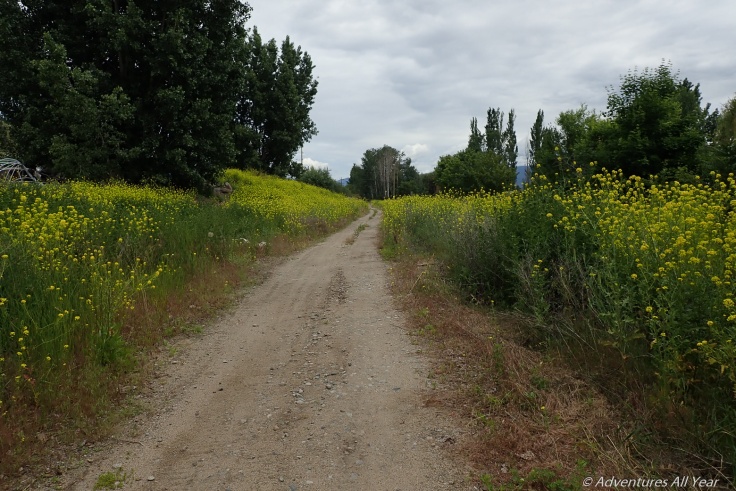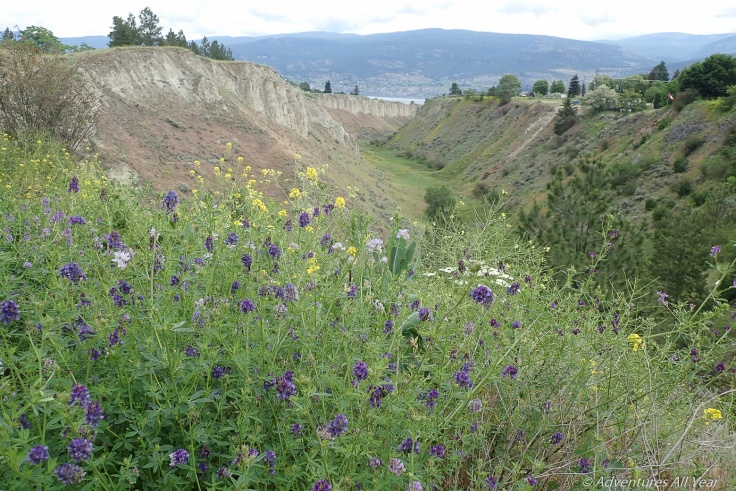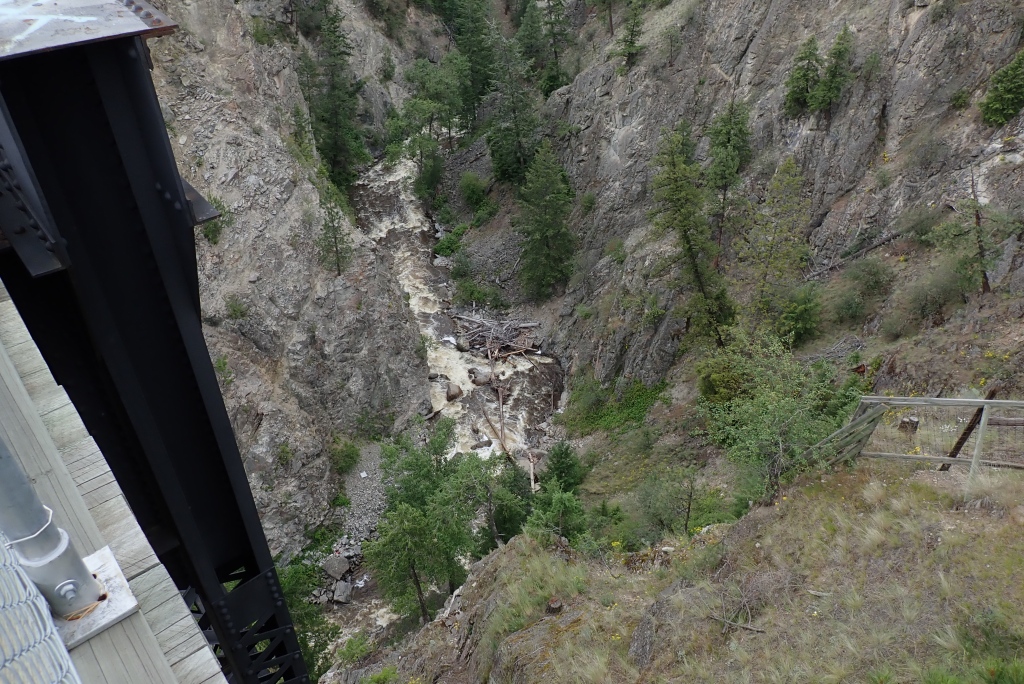Biking from Kaleden to Summerland
40 km/ 5 hrs round-trip, with plenty of stops for photos
If you drove on Coquihalla Highway between Hope and Merritt you might have noticed green point-of-interest signs by the side of the road saying Aurum Station, Portia Station, Juliet Station or Iago Station. They mark the sites of former railway stations on the Kettle Valley line from Brookmere to Hope. The railroad tracks are no longer there, but the rail bed remains and has been turned into a fantastic ~650 km bike trail spanning mountains and valleys from Vancouver to the Kootneys over a gentle 0.1% average grade.
The heyday of the Kettle Valley Railway (KVR) dates back to early 1900′ when the line serviced southern British Columbia by transporting ore, produce and eventually passengers on one of its five lines / subdivisions. Since 1950’s, with road transportation replacing that of rail, the slow decline of KVR resulted in gradual closures of subdivisions and removal of tracks. The last operating train left Merritt station in 1989 and the era of steam railway in this part of B.C. came to an end.
Whoever had the foresight to preserve the rail bed and turn it into a biking trail – we cannot thank you well enough. I suspect a lot of the gratitude goes to Trails BC, an organization which after years of navigating conflicting interests, dealing with right-of-ways and private land ownership ensured that the KVR did not fall into the dust of history but has prevailed as a world-class long distance biking path. However, it is not paved, sections of it are on loose gravel and / or sand and some portions have been washed out and will require you getting off your bike and pushing up and down a small gully. Not enough to discourage me, certainly, as it’s been a long, long lure to bike the full length of the K.V.R. one day.

Not having unlimited time I decided to break the journey into manageable blocks and so with our recent trip to Penticton my bike came with me.
Saturday was one was just a warm-up day. My husband was rock climbing with his buddies in Skaha and my plan was to explore KVR closer to Penticton in preparation for a big ride the following day biking from Penticton to Kelowna, a distance of over 90 km.
Whenever we go to the Okanagan we like to stay at Banburry Green RV and campsite. Situated just south of Penticton on the shores of Skaha Lake it a picturesque campground with its own beach and containers of pretty flowers all over the place. The additional bonus is that the campground is located smack on the KVR. In fact, the former rail bed is now the campground’s main paved road. So it was quite easy to see my husband off for his day of climbing, then don a helmet and head out on my bike straight from our tent site.
KVR follows the shore of Skaha Lake to Penticton where it is now overlayed by roads and unfortunately, is not signposted well. Several times I had to stop and consult my digital maps as I was trying to stick with the original railroad as much as possible. It wasn’t an entire success and in the end I found it easier to just follow the Channel Trail until the point where it meets with the KVR and enters Penticton Indian Band reserve (you are allowed to enter, provided you just stay on the trail and are non-motorized).

From that point on it was a ride full of little of marvels through beautiful wildflower patches, following a well defined trail through pretty landscape, then a forest and then to a surprising finale at Trout Creek Canyon which, at 60 m deep, was a formidable obstacle for the early railroad builders.


Spanned by a new steel trestle bridge (the original was made of wood) it brings you to a Canyon railway station in West Summerland – a cute little train stop for a tourist steam train – the last vestige of a once proud railway.

Leave a comment